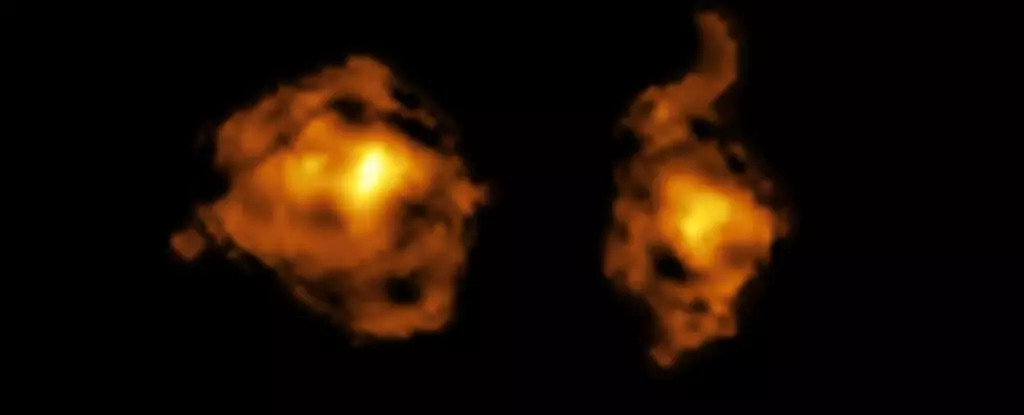The cosmos is host to an intricate ballet of energy, matter, and time, epitomized by the dramatic spectacles of galactic collisions. Recently, we witnessed a transcendent event where a quasar—an intensely bright region surrounding a supermassive black hole—interacted with another galaxy in a phenomenon likened to a “cosmic joust.” This fleeting moment of astronomical violence is increasingly revealing the complex mechanisms through which galaxies evolve, sparking a wave of curiosity and concern among astronomers worldwide.
The latest research has shed light on the impact of an active quasar within a galactic merger. As it fires powerful jets of radiation, it devastates the star-producing clouds of a neighboring galaxy. The sheer energy released not only disrupts star formation but also initiates a transformative process that may paradoxically foster new beginnings from its chaotic aftermath. It’s a vivid reminder that creation and destruction often coexist in the universe’s grand design.
The Quasar: Energy Powerhouse
An astute evaluation of quasars reveals their dual nature. While they produce an incredible amount of luminescence due to their voracious appetite for surrounding matter, this very power can act as a double-edged sword. As a quasar swiftly moves at a velocity of 500 kilometers per second, its jets violently bombard a neighboring galaxy, clearing its molecular clouds—the very incubators for new stars. Those gas and dust clouds, crucial for stellar formation, are reduced to mere specters of what they once were.
Sergei Balashev and his research team explain that this interaction at unprecedented scales forces us to reconsider our fundamental understandings of the galactic lifecycle. We are learning that the dominating gravitational forces not only funnel material into black holes but also send shockwaves through the fabric of nearby galaxies. This presents a chaotic but essential chapter of cosmic evolution that might suppress star formation in one galaxy while opening the door for it in another.
The Struggle of Star Formation
The collision is not merely a destructive encounter; it poses critical implications for how galaxies grow and develop over eons. The process, dubbed “quenching,” occurs as the active quasar expels material, blowing away potential star-forming gas. This not only impacts its victim but also itself, as the very act that fuels its growth simultaneously impedes its ability to generate new stars. This vicious cycle serves as a fascinating backdrop to our understanding of galactic topography and evolution.
It’s crucial to recognize that while massive black holes consume and destroy, the resulting feedback mechanisms can also contribute beneficially to cosmic ecology. The turbulence and energy released during these encounters can initiate conditions ripe for new star births among the interstellar dust—essentially paving the way for new life even as the old collapses.
Redefining Our Cosmic Narrative
Historically, our view of galaxies often kept them isolated, like static objects within a vast cosmic sea. With recent developments in observational technology, however, we are beginning to see their interconnectedness—how their relationships shape the very fabric of the universe. The ‘cosmic joust’ not only exemplifies interaction between two galaxies but also emphasizes an intricate network connected by dark matter, which serves to organize and guide these colossal entities through time.
This ongoing cosmic drama highlights that the universe is neither a simple collection of celestial bodies nor an arbitrary collection of isolated events; rather, it is a grand interconnected web where every collision resonates through the cosmos. Each violent encounter adds a significant chapter to the evolving story of galaxies, making the heavens a rich tapestry of intertwined destinies.
In reflecting on these phenomena, we are compelled to acknowledge not just the devastation wrought by cosmic interactions, but the resilience embedded within them. From chaos emerges order—highlighting an essential truth about our universe: that life, in all its forms, persists amidst turbulence. The cosmic joust serves not only as a reminder of the destructive forces at play but also as a testament to the notion of rebirth that remains etched in the cosmic narrative.


Leave a Reply